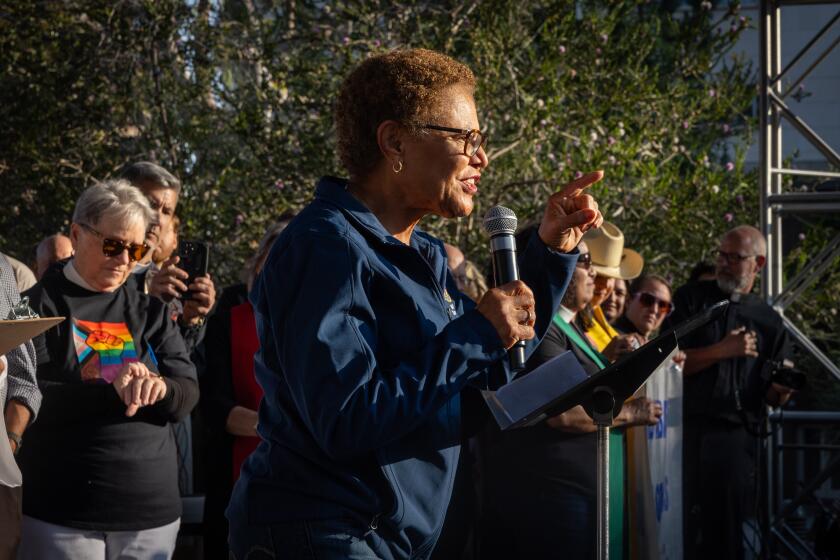Progress for Workers’ Comp
- Share via
The issues in the 1989 debate over workers’ compensation reform were similar to the legislative tangle in recent years over the high cost of insurance. The Legislature’s inability to negotiate a middle ground between the insurance companies and lawyers resulted in deadlock that led to competing ballot initiatives in the 1988 election. Even with the passage of Proposition 103, the insurance dilemma remains unresolved. But in the case of workers’ compensation, the lawmakers refused to give up, even after it became apparent that all the goals of a sound, long-range reform program could not be achieved this year.
Largely due to the tireless efforts of Assemblyman Burt Margolin (D-Los Angeles), California no longer will be burdened with what many consider one of the nation’s worst programs for compensating employees who suffer work-related injury or disability. The legislation, recently signed into law by Gov. George Deukmejian, falls short of making the $8-billion California system the best, but Margolin said the two-bill package at least will put a crumbling, disrespected program back on its feet. Efforts to complete the job must continue in future legislative sessions.
California has had an extremely costly program, but one that paid a maximum benefit of only $224 a week since 1983. For the past seven years, the governor has insisted on reforms before increasing benefits. One goal of the 1989 legislation had been to double the top payment, with the additional outlay to be financed by reforms that would cut program costs. The weekly maximum will increase by just 50% by 1991. The measures will limit an injured worker’s ability to shop for a doctor who would certify him for maximum benefits. Claim processing will be more efficient. There will be a tougher test to collect compensation for alleged stress-related disability and more emphasis on vocational rehabilitation.
Like the insurance debate, the workers’ compensation issue pitted insurance companies against attorneys, but also involved a coalition of business, industry and labor on one side and high-stress professions such as law enforcement on the other. Further deadlock probably would have led to opposing ballot initiatives--none of which would have provided a balanced reform. California is fortunate that Margolin and his colleagues did not give up on workers’ compensation reform this year, even though no party had a chance to get all it wanted. The state will benefit further if the Legislature can complete the job in the next year or so.
More to Read
Get the L.A. Times Politics newsletter
Deeply reported insights into legislation, politics and policy from Sacramento, Washington and beyond. In your inbox twice per week.
You may occasionally receive promotional content from the Los Angeles Times.










